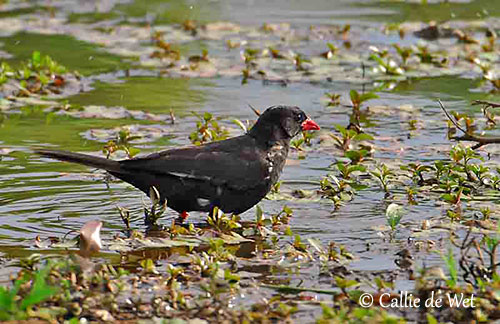
TO BE CONTINUED... THIRD PART
Text by Nicole Bouglouan
Photographers:
John Anderson
John Anderson Photo Galleries
Callie de Wet
GALLERY
Jean Michel Fenerole
Photos d’Oiseaux du monde
Steve Garvie
RAINBIRDER Photo galleries
Ken Havard
My Bird Gallery & Flickr gallery 1 & Flickr gallery 2
Patrick Ingremeau
TAMANDUA
Tom Merigan
Tom Merigan’s Photo Galleries
Otto Plantema
Trips around the world
Dubi Shapiro
Dubi Shapiro Photo Galleries
Simon Tan
PBase Bird galleries
Ingo Waschkies
Bird Photography
Sources:
HANDBOOK OF THE BIRDS OF THE WORLD Vol 15 by Josep del Hoyo-Andrew Elliot-David Christie - Lynx Edicions – ISBN: 9788496553682
ROBERTS BIRDS OF SOUTH AFRICA by G. R. Mc Lachlan and R. Liversidge – The Trustees of the John Voelcker Bird Book Fund – ISBN: 0620031182
The Birds of Africa: Volume VII – C. Hilary Fry, Stuart Keith – Editeur: Bloomsbury Publishing, 2020 – ISBN: 1472986563, 9781472986566 – 724 pages
The Birds of Africa: Volume VIII: The Malagasy Region: Madagascar, Seychelles, Comoros, Mascarenes - Par Roger Safford, Frank Hawkins – ISBN: 1408190494, 9781408190494- Editeur: A&C Black, 2013
CREAGUS@Monterey Bay (Don Roberson)
SORA - WEAVERBIRD NEST AGGREGATION AND EVOLUTION OF THE COMPOUND NEST
Repeatability of nest morphology in African weaver birds
11 Interesting Facts about Sociable Weavers
Weaver Watch - Monitoring the Weavers of the World
Fatbirder - The World’s Richest Information Resource about Birds for Birders
Wikipedia, the free encyclopaedia
FAMILY PLOCEIDAE – Second part (courtship behaviour and nests)
Weavers, sparrow-weavers, bishops, widowbirds, fodies, malimbes, queleas …
For all species of this family, the nest is the central element of the social organization. When a new colony is established, the nest-building by the future breeding pair forms the first part of their courtship.
The nests of the family Ploceidae are very different depending on the genus.
The weavers are known for their beautiful nests. Each genus has its own way of building the nest, but all build elaborate woven nests.
The subfamily Bubalornithinae contains three species, the buffalo-weavers.
They live in dry areas and forage on the ground in small flocks, and often in the wake of African Buffalo herds, giving the birds their name.
The Red-billed Buffalo-weaver of genus Bubalornis has black plumage with white wing patch and red bill and legs. It is one of the less coloured weavers. During the displays, wings and tail are spread to expose the white wing patches. The copulation follows the displays and may last up to 20 minutes.

Red-billed Buffalo-weaver
Bubalornis niger
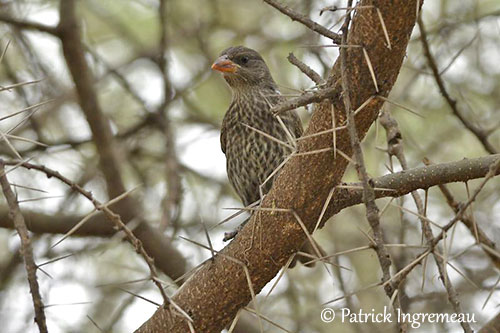
Red-billed Buffalo-weaver
Bubalornis niger
Female
The male builds the nest, a bulky structure made with thorny twigs. It contains up to 13 nest-chambers lined by both mates with fresh green vegetation. It is placed in tall tree, between 3 and 12 metres above the ground.
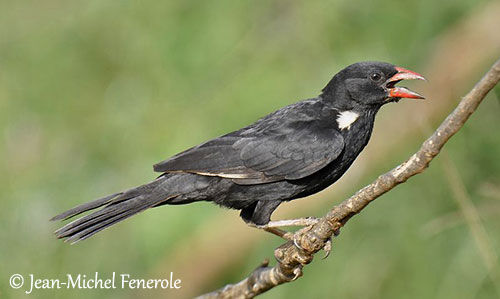
Red-billed Buffalo-weaver
Bubalornis niger
In the same genus Bubalornis, the White-billed Buffalo-weaver has also black plumage with white edges of primaries, and some white spots on scapulars or in the area from neck sides to flanks. In breeding plumage, the bill is whitish and ridged with a conspicuous hump above the nostrils. The non-breeding bird has black bill with smooth surface and pale yellowish base.
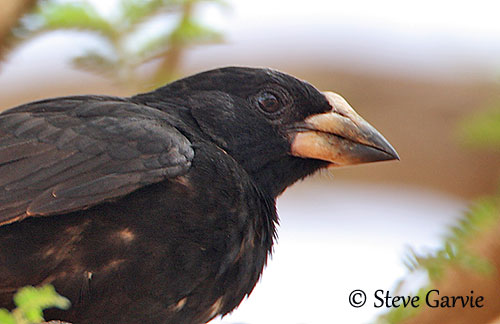
White-billed Buffalo-weaver
Bubalornis albirostris
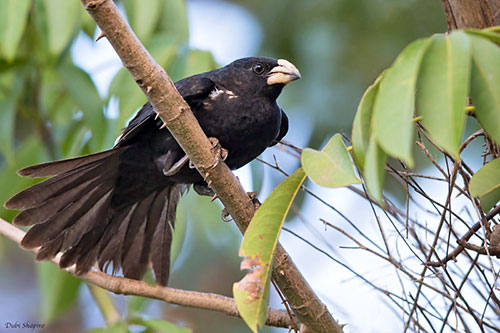
White-billed Buffalo-weaver
Bubalornis albirostris
They are polygynous and colonial. The male usually builds the main structure and often steals sticks from neighbour’s nests. Both adults add lining material, usually fresh green vegetation.
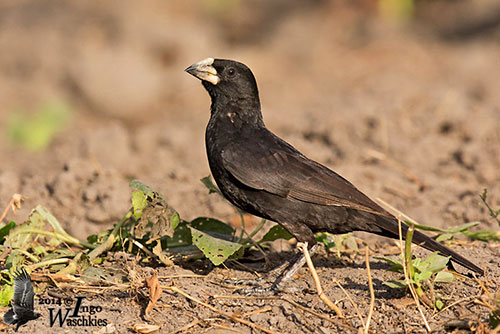
White-billed Buffalo-weaver
Bubalornis albirostris
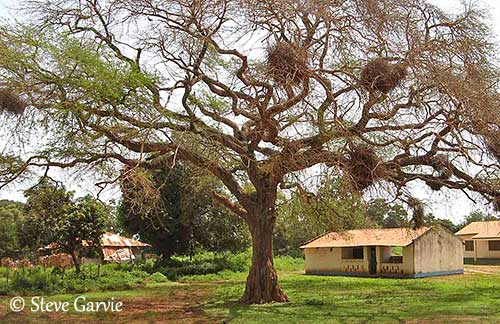
White-billed Buffalo-weaver
Bubalornis albirostris
Colony
The male White-headed Buffalo-Weaver of genus Dinemelia is territorial and becomes aggressive towards the intruders, but the encounters are mainly vocal. Usually, they are gregarious and feed, breed and roost together.
During the breeding season, they perform courtship displays. They prefer to display in open branches in trees, but also sometimes on the ground. The male spreads its wings in front of the female to display the white wing-patches and the red-orange tail-coverts.
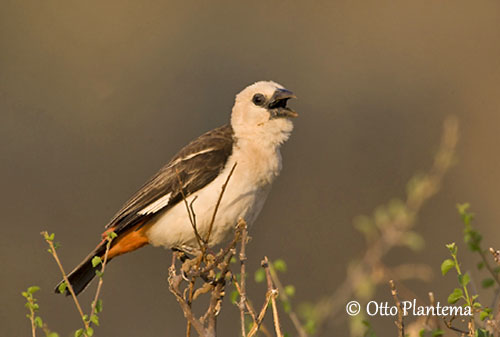
Dinemellia dinemelli
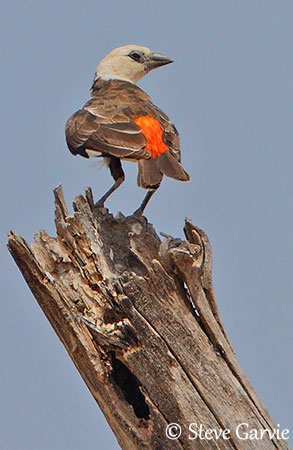
Dinemellia dinemelli
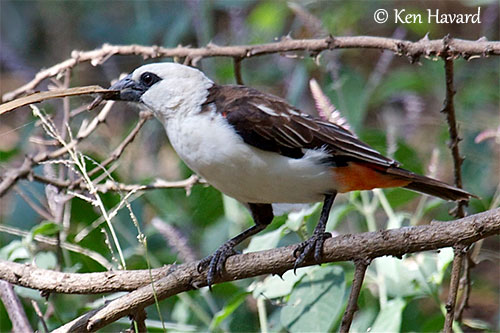
Dinemellia dinemelli
The subfamily Plocepasserinae includes several species of genera Plocepasser, Pseudonigrita, Histurgops and Philetairus. Some authors place them in the family Passeridae (Old World Sparrows).
The White-browed Sparrow-Weaver of genus Plocepasser is monogamous. It lives in groups and is a co-operative colonial breeder. The members of the group, usually their offspring, become helpers and are highly territorial. They defend strongly their foraging area and chase intruders out the territory which is occupied all year-round.
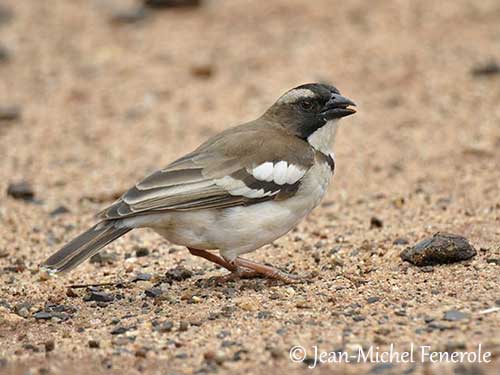
Plocepasser mahali
The dominant pair builds the nest, a tubular structure with two entrances, but one of which is closed during the nesting cycle. It is placed in thorny tree which provides protection against predators.
Nest-building occurs throughout the year, but mainly after rain. The nest is also used for roosting. This structure resembles a horizontal cylinder made of dry grasses. It is 30 centimetres long and 18 centimetres in diameter. It is built on supporting branches and there are two entrances, one at each end. The nest-building may last up to 10-18 days.
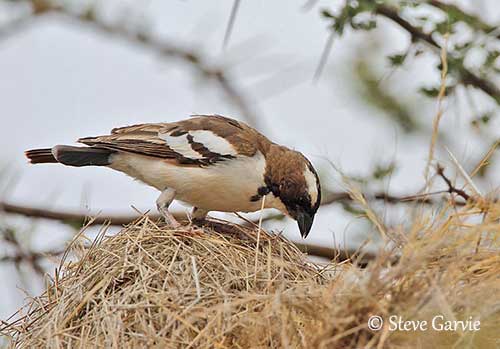
Plocepasser mahali
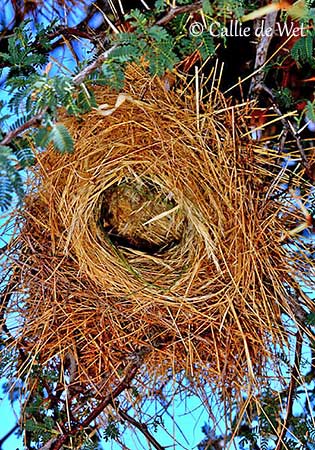
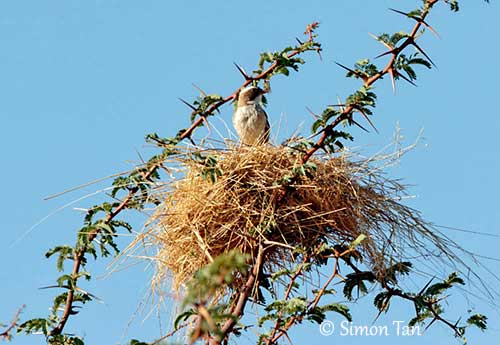
Plocepasser mahali
When the nesting cycle begins, the lower entrance is closed and the nest is lined with feathers (especially from Guineafowl of genus Numida). Some flowers are sometimes added.
The nest is built between 2 and 8 metres above the ground in thorny tree, mainly Mopane or Acacia, but some others can be used too.
The four species of buffalo-weavers build similar type of nests.
Plocepasser mahali
The Black-capped Social-weaver and the Great-headed Social-weaver of genus Pseudonigrita have different breeding behaviour.
The Black-capped Social-weaver is monogamous but it may be co-operative breeder. It nests in colonies of up to 60 nests is some close trees.
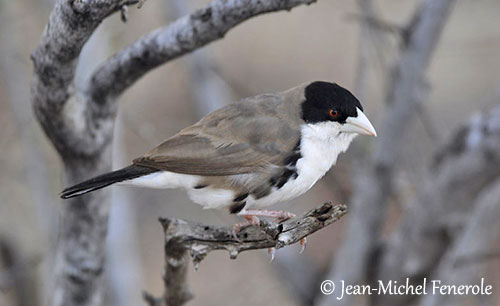
Black-capped Social-weaver
Pseudonigrita cabanisi
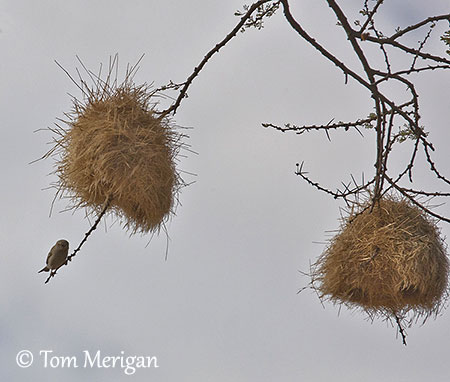
Black-capped Social-weaver
Pseudonigrita cabanisi
The Grey-headed Social-weaver is also monogamous and sometimes co-operative breeder. It is colonial with up to 150 nests in a single tree.
The nest is a compact mass of straight grass stems, also with two openings like the previous. However, this one is lined inside with feathers. It is attached to thin branches in acacia.
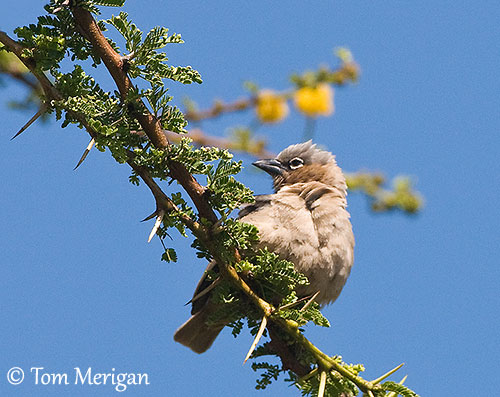
Grey-headed Social-weaver
Pseudonigrita arnaudi
The Rufous-tailed Weaver of genus Histurgops is mostly terrestrial and has longer legs than other more arboreal species. It is monogamous and colonial with up to 30 nests in a single tree.
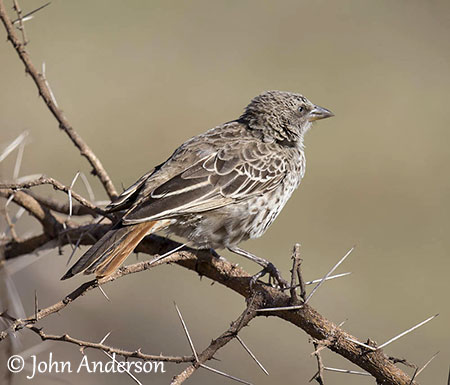
Rufous-tailed Weaver
Histurgops ruficauda
It builds a cylindrical ball with grasses, also with two entrances, one of them is closed when the eggs are laid. There is a poor lining with only some feathers. It is placed between 1,5 and 4 metres above the ground in acacia tree.
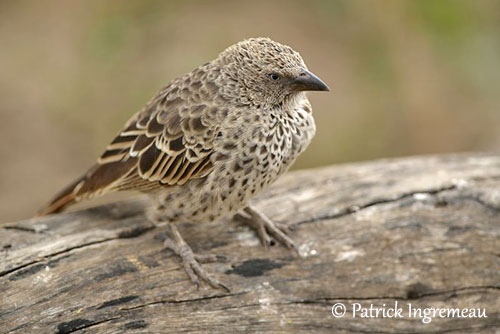
Rufous-tailed Weaver
Histurgops ruficauda
Most of birds’ species build a nest for only one breeding season, but Sociable Weavers of genus Philetairus use and maintain the nests throughout the year.
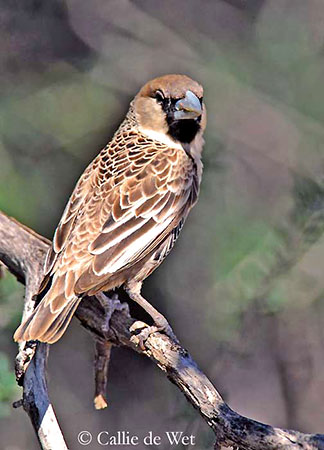
Philetairus socius
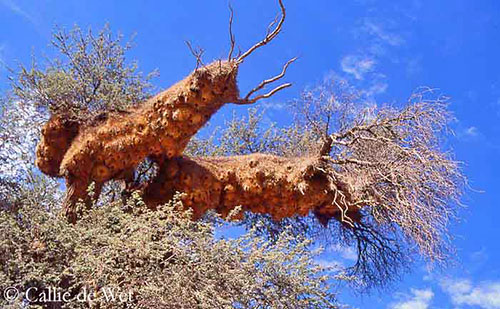
Philetairus socius
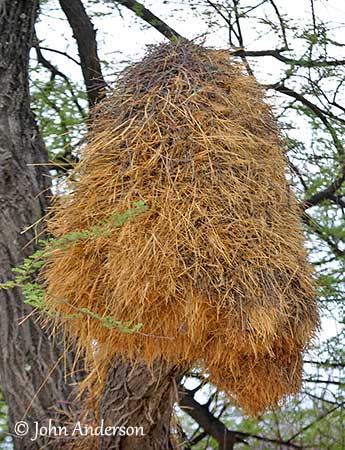
Philetairus socius
Looking under the nest, we can see the entrances to chambers, as “bee’s honeycombs”.
They use different materials for each purpose. This huge nest is covered by a roof made with large twigs and stems, placed at an angle, pointing downwards, until the vertical entrance driving to each chamber. Grasses are pushed into the structure until they are firmly secured.
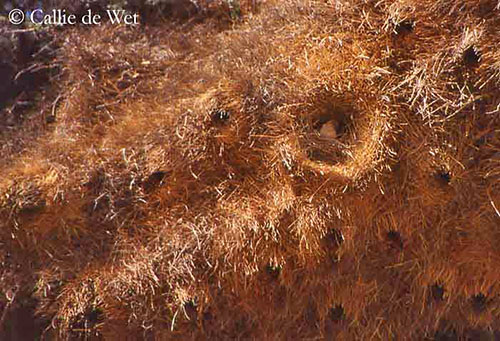
Philetairus socius
These sharp spikes of straw protect the entrances from predators. The nesting chamber is entirely lined with fine, soft materials, such as fur, cotton or fluff.
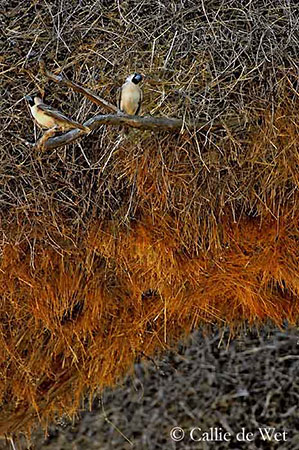
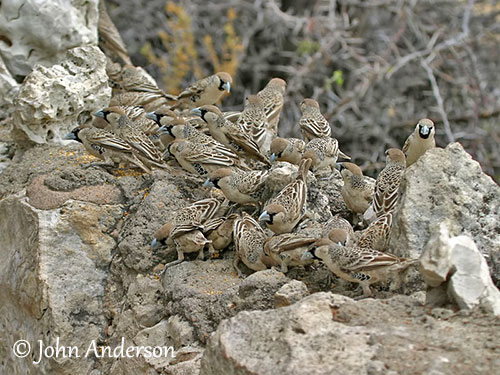
Sociable Weaver - Philetairus socius